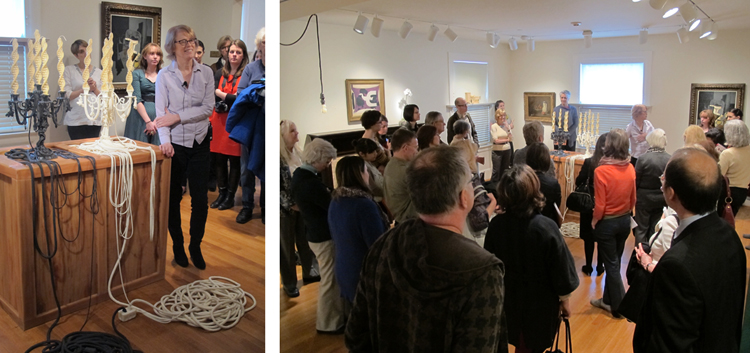
(Left to right) Valerie Hellstein gives a tour ; Willem de Kooning, Asheville, 1948. Oil and enamel on cardboard, 25 9/16 x 31 7/8 in. The Phillips Collection, Washington, D.C. Acquired 1952; Bradley Walker Tomlin, No. 8, 1952. Oil and charcoal on canvas, 65 7/8 x 47 7/8 in. The Phillips Collection, Washington, D.C. Acquired 1955.
In Valerie Hellstein’s spotlight talk yesterday, about her installation of abstract expressionist works, she moved us past familiar thoughts about the actions of the artist (think Jackson Pollock dancing over his canvases) toward a focus on the actions of the viewer. Action painting requires action on the part of the viewer to really experience the work, she explained. We attend to the colors. We think about the depth of the paint and the forms on the canvas. Active looking is required to do more than just pass by the work with a glancing notice. And through our active looking, we become aware of our moment and our place in that moment, standing before the painting.





